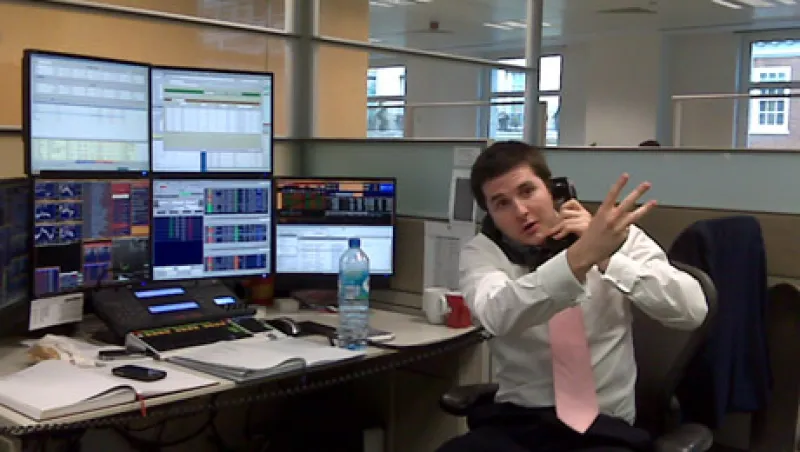Over the past few years, I’ve spent a lot of time lobbying for (and writing at length about) collaboration and co-investment among institutional investors. Put simply, I think the development of networks of large asset owners will profoundly help those of us trying to remake finance and re-align interests between asset owners and asset managers. So, for example, if you look at my ‘pyramid for successful direct investing’ you’ll see that I think “networks” are a crucial component. Also, if you read my manifesto on ‘frontier finance,’ you’ll see that Adam Dixon and I believe that peer-to-peer relationships are pivotal for those funds that want to bypass Wall Street.
But perhaps where I’ve been a bit delinquent in my work to date is rooting this networking passion I have for readers in some good old-fashioned ‘academese’. Well, friends, that stops today. So drink that espresso shot and pin those eyelids back, because this could get... slightly boring.
A guy named Ronald Burt wrote a seminal paper in 2004 called “structural holes and good ideas”. This paper had a profound impact on the way many of us think of the value of social capital and indeed the role of networks and, specifically, ‘brokers’ that occupy the space between organizations and groups. (To give you a sense of how big a deal this Burt’s paper is, over 12,000 academic papers have cited it in under a decade; that’s a bit like being the founder of a new academic discipline.)
Anyway, Burt starts out with a definition for social capital, which he describes as the advantage an individual enjoys due to their location within a broader social structure. He then goes on to define a sub-class of social capital: social capital of brokerage. The latter refers to the ability of an individual to translate information from one group to another in a manner that affords value to one or both of those groups.
Not that I need to tell finance professionals, but Burt shows that there is value in brokerage; due in large part to the fact that most people within organizations or groups are likely to have homogeneous opinions and behaviors, which minimizes the likelihood of innovation or creativity. But Burt shows that those that exist in areas that bridge organizations and groups (i.e., brokers) will be more familiar with alternative ways of thinking, which, in turn, provides the broker with more options and an ability to integrate the new insights into a revised and indeed synthesized modus operandi. As Burt notes, this concept goes all the way back to Adam Smith: “... when the mind is employed about a variety of objects it is somehow expanded and enlarged.”
To provide greater clarity here, let me run you through the four acts of brokerage that, according to Burt, really do add value:
- The simplest act of brokerage is to make two parties aware of the interests, needs and difficulties of the other groups. By explaining the issues between two groups in a way that all can understand, a broker will add value by helping to avoid costly misunderstandings.
- A higher level of brokerage is the transfer of ‘best practice.’ A broker between groups is often better placed to identify practices in one group that could add value in another group.
- A third level of brokerage is to be able to draw analogies between groups that would otherwise appear irrelevant to the two groups. The skill here is to be able to identify seemingly incongruous behaviors within two different groups as having some synergistic potential.
- Burt’s highest level of brokerage arrives in the form of ‘synthesis’: This is where a broker that bridges groups synthesizes his or her knowledge of the behaviors of the two groups and, in turn, creates new behaviors that, say, bring the best behaviors of two groups into a single set of behaviors.
These brokers — these individuals that occupy the space between organizations — are, as you can now see, crucial for innovation and creativity. They thus have the capacity to add a lot of value, and this has been shown to be true empirically. Indeed, Burt found in his paper that ‘...managers whose networks spanned structural holes were more likely to express an idea and to discuss it with colleagues, have the idea engaged by senior management, and have it judged valuable.’
But there’s a PROBLEM here. Burt also finds that most large organizations, and this no doubt includes the world of institutional investment, have a variety of incentives that push staff away from external peer networks; these groups thus seem to encourage staff NOT to collaborate or “broker” between other organizations or groups. And so they miss out on considerable value.
But I’d take it further than this! I think the brokerage industry in finance is broken in large part because brokers are (almost by definition) external parties with their own interests and priorities. And yet these intermediaries, as Burt shows above, have an amazing potential to benefit the institutional investment organizations... for the simple reason that they occupy a space between organizations.
Let me put this more clearly: Brokers add value not simply because they are more intelligent or sophisticated; they add value because they are in the right spot at the right time. Cynically, then, I’d argue that they get to enjoy the appearance of “adding value” because they are leveraging the returns to their social capital of brokerage. In other words, the value that these individuals are capturing is as much structural as it is personal (or inter-personal).
And this is why I continue to push (hard) to get institutional investors to collaborate and co-invest. Because if a pension fund or sovereign fund allows external consultants, placement agents or (lord have mercy) bankers to occupy these ‘structural holes’, then the former will not only miss out on value-adding opportunities... but they will also be handing over a massive asymmetry of information to the financial intermediaries. And what are the chances that the intermediaries will use those asymmetries for their own good? Exactly.
In sum, let me return to what I said in the beginning of this post, I think the development of networks of large asset owners will profoundly help those of us trying to remake finance and re-align interests between asset owners and asset managers. We need the asset owners to become their own brokers (they need internal consultants, bankers, portfolio managers, etc.). I’ve even gone so far as to suggest that they need ‘Chief Networking Officers’. I think all of this is crucial. And now, friends, I hope you understand a bit better why I think that way...






